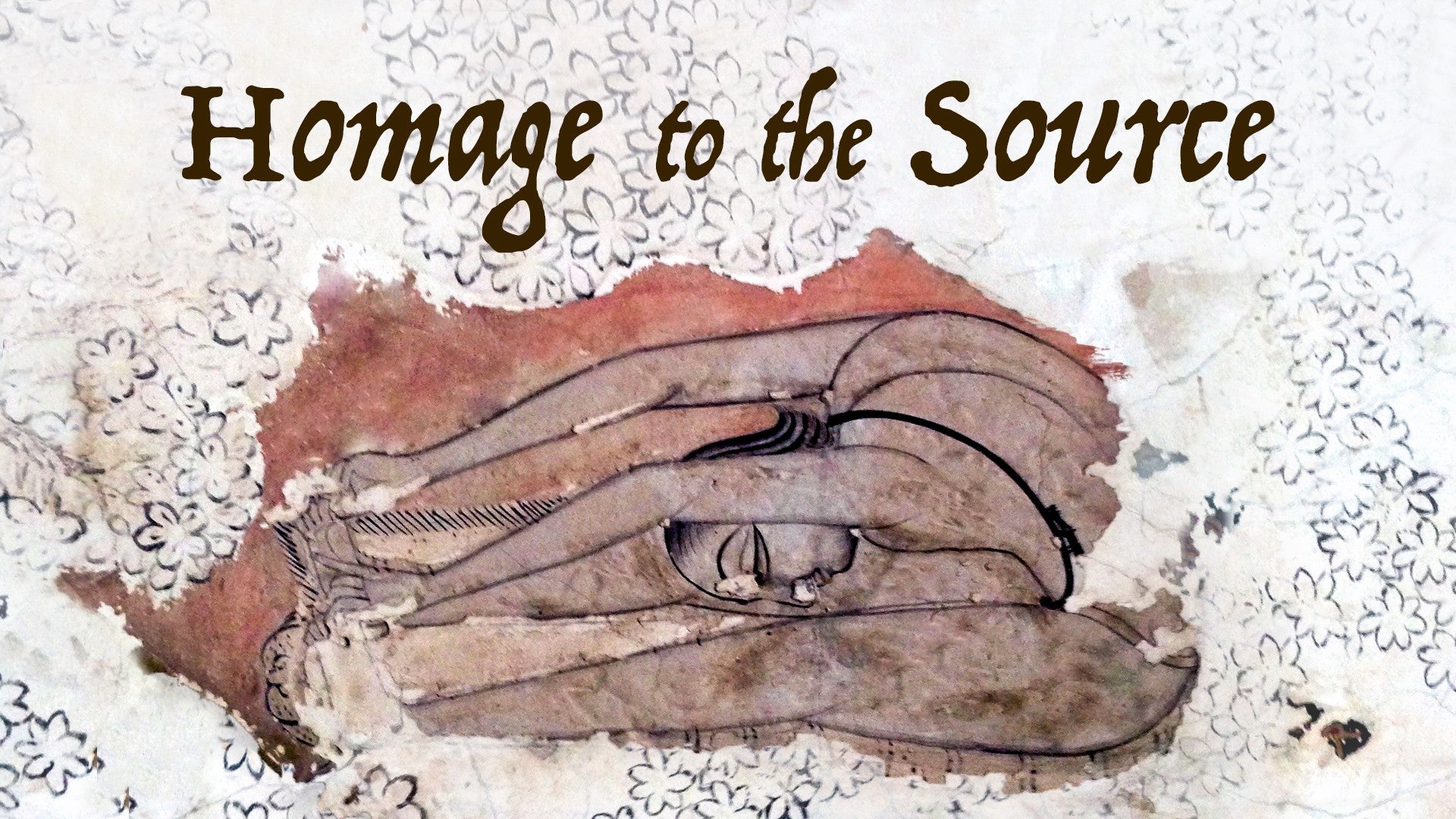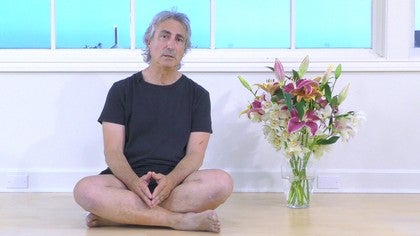Description
About This Video
Transcript
Read Full Transcript
Many years ago, before there was such a thing as an internet on which you could buy books, books were bought in bookstores and I was in my favorite bookstore in Berkeley, California on Telegraph Avenue, which the locals call the Ave, and I was a young yoga student and I wasn't very familiar with the yoga tradition quite yet. And I'd heard about traditional yoga books and I had never seen one before and on this particular day I was searching through the Indian section in this very large bookstore and I came across a book called the Hatha Yoga Pradipika, which was a moment of great exhilaration for me because I'd never really seen that book before. It wasn't available online and I enthusiastically grabbed it off the shelf and went and bought it immediately and began to read it. This set off a search for other traditional texts. They weren't easy to find in those days but in Berkeley it's easy to find books that are hard to find because there's a lot of people doing different kinds of research and study in and around the University of California there. So eventually I came across the three central texts, what are considered among the three central, what are considered among the central texts, let's put it that way, of Hatha Yoga, which is the Hatha Pradipika, the oldest of the three, and then the two others are the Shiva Samhita and what's called the Garhanda Samhita and the Garanda was particularly interesting to me because it contained a number of asanas that I'd never seen in any of the other texts. Now the Garanda is a book that was produced in the middle of the 17th century around the 1650 or so and the author is unknown and this is not unusual among traditional texts. Oftentimes the author of the text, the actual author of the text will attribute the book to a deity or a better known yoga teacher to give it more cachet, to give it more heft and in those days too the authors were not as concerned about getting their name on the title page as we are nowadays. Someone has once said that even authors who write books in favor of humility are careful to put their name on the title page and in the old days that wasn't that wasn't the case and so we have a lot of texts from that year along ago in which we don't really know who the author was. The Garanda is a text of 317 verses divided among seven chapters and each one of the chapters is dedicated to one of the practices in this particular brand of Hatha Yoga and the instruction in this text is delivered through what's called a frame story. In other words we are sitting in on a conversation between a teacher by the name of Garanda and a student who comes to him in all humility by the name of Chanda. Now Chanda is a Kapilika which means that he's a skull-bearer and these are the men who wandered around the countryside in India using the the top half of a human skull as a begging bowl and these guys were pretty heavy-duty ascetics and to see him come to Garanda and call him the Yogeshvara and Yogeshya, the lord of yoga, the master of yoga is quite humbling and so we understand that Garanda whoever he was if he ever did exist was a very powerful human being and Chanda very humbly asks Garanda for the for the teaching and what he calls Gathasta yoga which means the yoga of the pot. So in this text nowhere is Hatha Yoga called Hatha Yoga, it's called a yoga of the pot which means the human body-mind considered as the vehicle of transformation from the mundane to the spiritual. Now the situation of this conversation between the teacher and the pupil is very archetypal. The pupil is us, we go to the to the teacher to the self, the great self for instruction and we look inside to the true teacher to find out about our our work in yoga and Garanda is very willing and grateful to be able to pass along his knowledge to Chanda. Chanda by the way means glowing and fierce and passionate and this of course is a indication of his his practice which is very fierce and passionate and fiery. Most of us are familiar with the yoga sutras in which the first two practices are the moral or the moral injunctions truthfulness non-harming things like that. Hatha yoga jumps right off into the deep end of the pool they're not particularly interested in moral practices. Usually it's assumed that you already are a very moral person before you come to the teacher and the teacher assumes that you are just that before he or she delivers the teaching. And so Garanda begins the chapter on Asana which is the second chapter with by talking about the old tradition that goes back several hundred years before the the text that there are 8.4 million Asanas in the world, one for every living creature and of course the number 8.4 is or 84 I guess is a highly symbolic number in in the yoga tradition. Nobody can say exactly why but it's considered to be a holy number by by by the practitioners. And of course 8.4 million Asanas are a little bit unwieldy to work with and and so they are whittled down. This is not unusual of of numbers in yoga. They start out with some fantastic number and it's gradually whittled down to smaller and smaller numbers. So for the Asanas the first number that gets that the 84 8.4 million is whittled down to is 84. And in the book these are called the most excellent or preeminent Asanas. And there are a few books out there traditional books that is in which these 84 Asanas are described. But there's no standardization among the different books that do this so it's just not really easy to figure out which which which is the more accurate representation. But 84 Asanas are still a bit unwieldy and so in the Garanda Samhita the 84 Asanas are whittled down to 32 which are called the most useful Asanas for humans to use to gain success in the world. Now what that means success is for Hatha yoga it means three things. Number one of course is spiritual self-realization which means that sort of a disassociation with the limited self and a reorientation of the identity with with with the with it with the authentic self with the Akman or Brahman. The other second goal of Hatha yoga is to live a long life and the reason for that is twofold. Number one they wanted a longer life to be able to live longer to be able to practice longer that's the first thing because the practice wasn't all that easy. And the second thing was after they were liberated in Hatha yoga the ideal of course is Jivan Mukti which means liberated while living. In the older practices liberation involved leaving the body or what we call death but in Hatha yoga the world was seen as the body of the goddess and the yogis wanted to stay around and enjoy the beautiful world you can see behind me some of the beauty of that world. And the third reason that they wanted that they practiced yoga in the old days was to gain power. Now a lot of modern teachers will tell you that this is not the case that it's that the power is an epiphenomenon that it comes along with the practice but that it the power should be ignored but in fact in the old days the yogis not only cultivated the power but actively sought the power over nature and other people. And so as I was reading the Garanda Samhita and looking through these 32 asanas it occurred to me that it would be possible to take them and make them into a practice. Of course it was not would not really reflect what was actually done in the old days but it would reflect sort of the kinds of things that they were doing in the old days as as far as their as part of their asana practice. And so I started to work on this it was many years ago at least 15 or 16 years ago at least. And as I went through the practice I realized that some of the asanas were so similar that it wouldn't be very useful to do them all in the sequence. And there were a few other asanas that were so difficult that I didn't really believe that most people could do them. And so I cheated a little bit and I dropped the asanas that were very similar and also the ones that were seemed quite impossible to do. But I wanted to keep the number at 32 because I felt it was a significant number although I couldn't really find out any symbolic value to the number 32. So what I did was I took some of the mudras that are also listed in the text. Mudras are seals, in this case body mudras, that are very asana like. For example shoulder stand started out as a mudra called Viparidha Karani mudra. And I substituted these mudras. I dropped a total of seven asanas from the original list of 32. And so I took six mudras and substituted them for six of the asanas I dropped. And then I took one asana from an older text, the Hatha Pradipika, to bring the number back up to 32. And then I arranged them into what I felt was a reasonably practical sequence. Now this sequence is not carved in stone and I haven't copyrighted it or anything like that. So it is possible to take these asanas and these sequences and change them around or you can use them as they're ordered. And I guarantee you you can teach them to your students and you won't be sued if you do. They're freely offered and I hope that you will enjoy them in any way you like. You have to be a little bit reasonable about some of them because there are a few advanced asanas like lotus pose, headstand, shoulder stand of course. So you have to be careful of who you teach these asanas to. But in general, particularly the opening sequence is quite a nice opening sequence that can be used in various different contexts. So try it out, see how it goes, and then play with it. The yogis say that the world itself is play, Leela. And so there's no reason why you can't take these asanas and have a good time. And try them out in any way that you feel it's reasonable to work for you. So how much to the source and the 32 asanas from the Garanda Samhita. And I hope you have a good time with them and enjoy them and use them wisely. And as they did in the old days, not as an end to themselves, but as a means to an end, which is breathing and meditation, which we also have created episodes for. So we use these asanas as a foundation for more subtle practices, breathing practices and meditation. But spend some time with the asanas, enjoy them, learn them, and then put them to good use. Thank you.
Homage to the Source
Comments
The episodes that follow in Season 1 of Homage to the Source detail out the 32 asanas of which Richard speaks.
//www.yogaanytime.com/show-view/54 /Yoga-Show-Homage-to-the-Source
xok
You need to be a subscriber to post a comment.
Please Log In or Create an Account to start your free trial.













